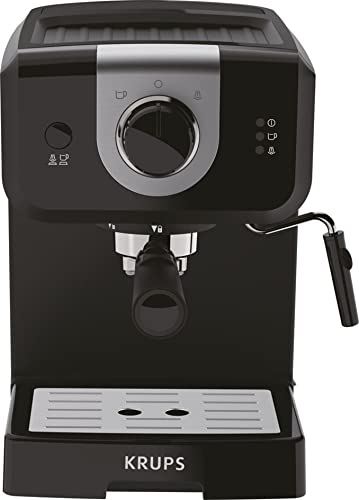Coffee and Espresso Machines
Espresso machines make use of pressure to force water through finely ground and tamped coffee beans. They create a rich and delicious brew.
Experts from the Good Housekeeping Institute recommend models that brew at a minimum pressure of 9 bars to ensure the highest extraction. Beware of companies who claim they use more pressure than is necessary.
Types
The espresso maker (also called a coffee maker and Espresso maker) brews coffee that is more concentrated and of better quality, and more expensive than your typical café drinks. It utilizes an average of nine bars of pressure. These machines are equipped with many features, such as the control of temperature and brew strength with programmable brewing as well as multiple sizes of drinks. Some machines may have manual or automatic steam wands for creating texturized milk for the latte art. There are three main types: semi-automatic, super-automatic and automated. Each espresso machine comes with its own specific level and type of automation.
The most well-known espresso machine for specialty coffee shops is semi-automatic models. This gives baristas full control over the brewing process, but it is not as user-friendly as a fully automated machine. To get the most perfect espresso shot, you must grind the beans, fill the portafilter and tamp it down, then adjust the extraction time.
Automated machines have built-in grinders which measures and grind the grounds for you. why not look here disperse the proper amount of water needed to extract the espresso, and often come with a programmable drink size function. In our laboratory tests, they were the most sought-after kind of espresso machine. They offer a good combination of control and consistency.
Functions
There will be a need for a reservoir that can hold the water you need for making coffee, whether you opt for a steam-driven machine or a pump-driven machine. There's also a heating element that heats up the cold water in order to create the pressure necessary to extract coffee from ground.
When the brew lever gets raised, it triggers the water inlet cam, which seals the valve to prevent pre-infusion. This ensures that only intensely pressurized hot water flows through the portafilter into ground coffee. It takes around 25 minutes for the water to brew into espresso.
The insulated tubing called the hot-water tube is affixed from the reservoir to the spout that is on top of your machine. The heating element for resistance will heat the water as water passes through the aluminum tube and metal warming plate.
After the spout has been turned on, place your cup underneath the spout so that the espresso is able to flow into your cup through the portafilter. The coffee maker also has a steam wand that you can use to heat up and froth the milk for espresso-based beverages such as cappuccino and latte.
Automated machines take the guesswork out of brewing. They are simple to operate, programmable and are able to measure and grind beans, as well as reduce tamping. In our Lab tests they tend to perform best due to their being simple to use and don't require an extensive amount of user expertise.
Materials
Inside an espresso machine there's a maze of copper tubes and boilers made of stainless steel. There's also an intelligent firmware. Although they may appear complex the primary purpose of these machines is to push hot water into finely ground coffee.
When shopping for an espresso maker, think about the size and the space needed, beverage options, energy-saving options and brewing precision. Also, look for a steam knob to activate the steam wand to froth milk and making artwork with latte. The front of the machine features a pressure gauge that will show the operating pressure of the boiler and pump. You should choose the coffee maker that has two needles in order to determine the maximum and minimum pressure.
If you're looking for more than just espresso, you can choose the machine that comes with different sizes of brew. This includes ristretto. There are models with an hopper that can be removed for easy, hands-free frothing as well as the ability to switch between different kinds of milk. If you have hard water, opt for a model with a built-in softener to prevent the buildup of minerals and keep your espresso tasting fresh.

Certain manufacturers employ a thermostat that is digital, integral and proportional to keep a certain temperature range when making espresso. This ensures a high-quality espresso cup every time. This feature also helps reduce cost of energy since the machine only runs if necessary.
Maintenance
The care and maintenance of espresso and coffee machines is becoming more essential as they become available for use at home. The best equipment can make an enormous difference in the quality of your coffee however only if it's well maintained.
A regular maintenance and cleaning routine should include everything from cleaning the steam wand and group head, to descaling, to changing the water filter on a regular basis. In general for making between two and five cups of coffee per day, you should wash all parts of the machine once a week. Some components of the machine will require cleaning every two to three weeks, like the water tank and the grinder.
You should also backflush the machine each week. This involves placing the portafilter in its place and running the brew cycles multiple times. This helps to remove any coffee grounds or oils left behind. You can also use a brush or cleaner designed specifically for espresso machines to clean the portafilter.
Maintaining your coffee and espresso machine in a proper manner can ensure that it lasts longer. It is essential to maintain your expensive espresso machine.
